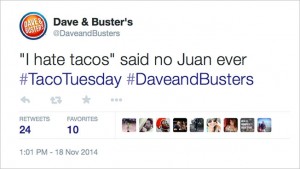Being a manager is tough. Everyone wants to be the boss who inspires and uplifts employees, encouraging them to take risks and succeed, but even outstanding managers find themselves having to break bad news occasionally. Sharing bad news, whether about a canceled project, rejected raise, or poor performance review, is necessary and can often be constructive. To break bad news without breaking an employee, good managers prepare for the conversation, manage the talk with effectiveness, and follow up afterward.
Prepare
Preparation is key. Take time to understand why the decision is being made. If this is something you alone are responsible for, outline the reasons for the bad news. If the decision is coming from another department or from a boss above you, make sure you are familiar with their rationale.
Be Confident
You do not necessarily have to agree with the decision, but you must be confident in your understanding of it. Be more than a middleman. If you have time and a confidant, rehearse the conversation to practice delivering your message and answering questions.
Never Sugar Coat
Writing for the “Harvard Business Review,” editor Amy Gallo emphasizes that a manager must avoid sugar coating the message. It can feel blunt to deliver bad news directly, but sugar coating sends mixed signals and can lead to misunderstandings. Even though the employee is likely to be disappointed, he will also want to understand the decision and learn what it means for him going forward.
Take Time to Explain
Explain the rationale behind the decision, speak confidently, and avoid negative body language. Be prepared to answer questions. The employee may want to vent. So long as it stays respectful, venting is fine, but avoid engaging in debate. Instead, discuss immediate next steps to move toward a better outcome.
Move Beyond the Bad News
Try to work together to identify a positive outcome. What happens after the breaking of bad news can often be more important than the conversation itself.
Follow Through
In “10 Commandments for Delivering Bad News,” Georgetown University management professor Robert Bies identifies the second commandment as: “Thou shalt always follow up and follow through.” This means helping the employee improve beyond the conversation. What solutions or next steps did you identify when speaking with the employee? What can both of you do to enact those changes? And after you have let the employee digest the information and next steps, check in again to see how it’s going.
Set Deadlines for Change
Setting deadlines to follow up on lets the employee know that you are serious about his professional development. Work proactively to bring about outcomes that are beneficial for both the organization and the worker, because the two ideas should never be mutually exclusive.
Business & Finance Articles on Business 2 Community(19)
Report Post







